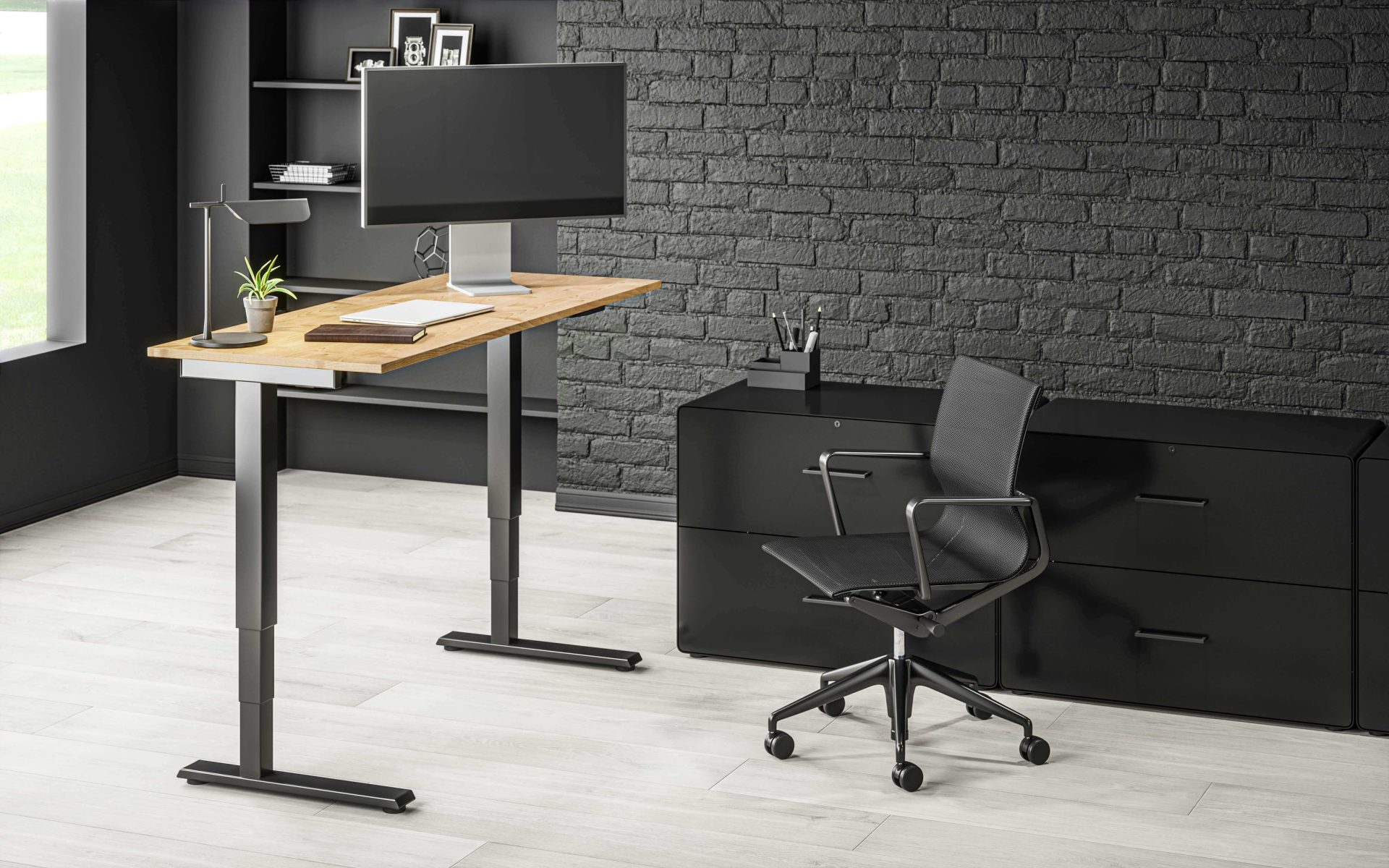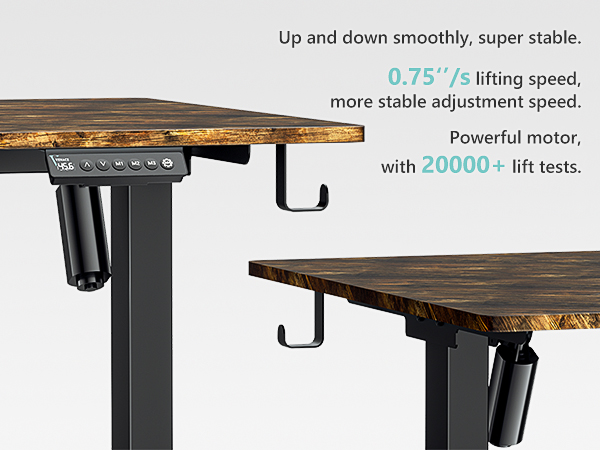Standing desks are the new must-have for workspaces. They promise less back pain, better energy, and more focus. But—and here’s the catch—simply having one doesn’t guarantee any of those benefits. If it’s not adjusted right, a standing desk can quickly become your worst enemy. The secret to success? Get the height just right. Adjusting your desk properly can save your back, neck, and wrists from unnecessary strain. So, how do you do it? Let’s break it down.
Why Ergonomics Matter
Imagine this: you’re standing at your desk, feeling uncomfortable, straining your back, or craning your neck. Not ideal, right? That’s why ergonomics are a big deal. It’s all about getting the desk, the screen, and the keyboard positioned perfectly for your body. If you don’t get it right, you’re asking for trouble. The good news is, it doesn’t have to be complicated. With a few simple adjustments, you can set your desk up to work for you.
Finding Your Perfect Desk Height
The first rule of standing desk ergonomics? Desk height matters. And it matters *a lot*. The ideal height will vary based on your body, but here’s the general rule: when you stand, your elbows should form a 90-degree angle. If the desk is too high, you’ll feel the strain in your shoulders. If it’s too low, your wrists will suffer.
For most people, a desk height of 40-45 inches works. But, as we know, not everyone’s the same height. That’s why adjustable desks are a game-changer. If you’re too tall or too short for the standard height, simply tweak it until you find your sweet spot. Keep playing with the height until your arms can rest comfortably at your sides, with your forearms parallel to the floor. When your desk is in the right spot, your body will thank you.
Getting the Monitor at Eye Level
Next up: your monitor. If it’s not at eye level, you’re setting yourself up for neck strain. Think about it: you’re working for hours, your head tilting up or down—your neck will hurt, and your focus will suffer.
The fix is simple: adjust the monitor so that the top of the screen aligns with your eye level. No more peering down or craning your neck up. Keep your head neutral, your gaze straight. The screen should be about an arm’s length away—far enough to avoid eye strain, but close enough to see clearly. Find that distance where your eyes feel comfortable. It’s a small tweak with a big payoff.
Keyboard and Mouse Position: Don’t Forget Your Hands
Let’s talk about the keyboard and mouse—your two workhorses. They need to be set up right. If your arms have to stretch or reach, you’ll end up with shoulder pain or wrist strain. So, what’s the trick? Keep your elbows at 90 degrees, with your wrists straight and your hands hovering comfortably over the keyboard.
If your desk isn’t adjustable for the keyboard, a separate tray can help. It’ll ensure your hands rest naturally, without straining your wrists. The mouse? Keep it close to the keyboard. Don’t reach. Your arm should remain relaxed, not overextended.
Small adjustments here can make a huge difference in how your body feels at the end of the day. Don’t overlook the importance of a proper setup for your hands and arms.
Foot Positioning: The Foundation Matters
It’s easy to forget about your feet when you’re focused on adjusting your desk height, but they play a crucial role too. Your feet should be flat on the ground, with your knees slightly bent. Don’t lock your knees or shift your weight onto one leg. Stand with your weight evenly distributed between both feet.
Standing for long periods isn’t easy. That’s where an anti-fatigue mat comes in. These mats cushion your feet, providing relief from the pressure of standing. Trust me, you’ll feel the difference after just a few hours.
Also, don’t stand all day. Even with a standing desk, it’s important to alternate between sitting and standing. Give your legs a break, and avoid staying in one position for too long. Adjust your desk to make this transition easy. Switch between sitting and standing regularly to keep your body in balance.
Adjusting for Multiple Users: Flexibility Is Key
Do you share your desk with someone else? If so, flexibility becomes even more important. You and your coworker might not be the same height, so a desk that easily adjusts to different people is a must.
Adjustable desks are great for this. With just a quick press of a button, the desk height can change to suit whoever’s using it. Some desks even have preset memory functions, which makes it even easier. One press, and your desk is ready to go. It’s that simple.
If you’re sharing a desk, don’t just guess what height works. Talk to the other person. Make sure both users can easily adjust the desk to their needs. This way, everyone wins.
Keep Moving: The Key to Comfort
Even if your standing desk is set up perfectly, don’t just stand still all day. Your body needs movement. Shifting your weight from one foot to the other helps reduce fatigue. A quick stretch or a short walk can keep you feeling fresh and prevent stiffness.
Alternating between sitting and standing is a great way to keep your muscles engaged. A standing desk that’s easy to adjust makes this a breeze. Move around. Keep your body active. It’s the best way to stay comfortable and energized.
Conclusion: Make Your Desk Work for You
The perfect standing desk setup is about more than just height adjustments—it’s about creating a comfortable, personalized workspace. Take the time to adjust your desk, monitor, keyboard, and mouse to fit your body. Remember: there’s no one-size-fits-all. What works for someone else might not work for you.
The key is to experiment, adjust, and listen to your body. A standing desk that fits you perfectly will make all the difference. So, get your setup right, and enjoy the comfort, focus, and productivity that come with it.


